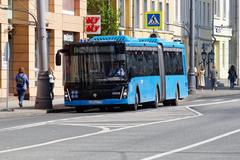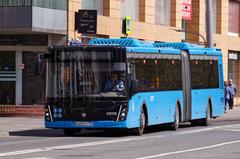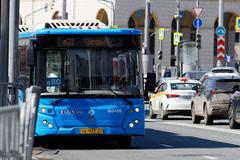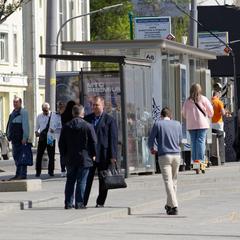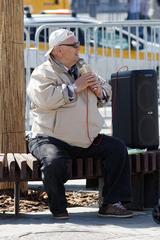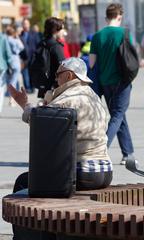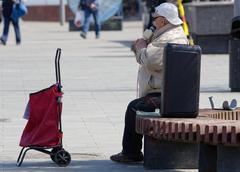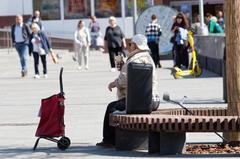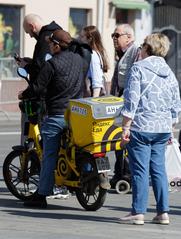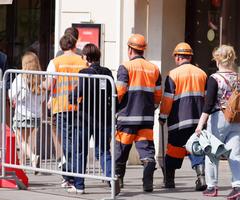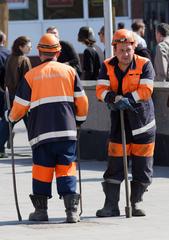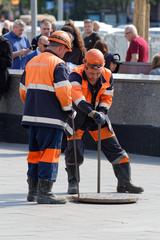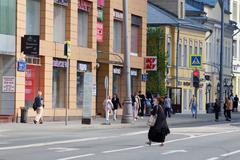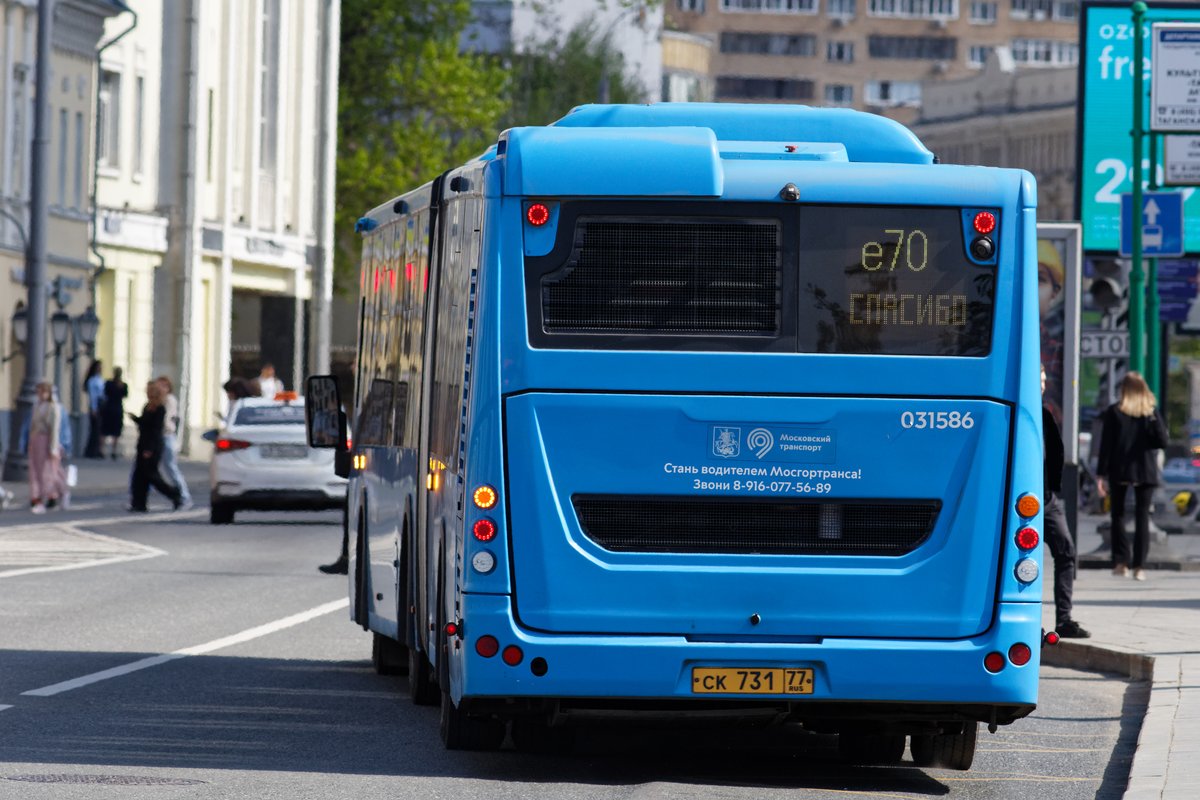
Taganka Square: Visiting Hours, Tickets, and Historical Sites in Moscow
Date: 14/06/2025
Introduction to Taganka Square
Located in the southeastern sector of central Moscow, Taganka Square is a vibrant urban landmark that showcases the city’s rich and layered history. Named after the Tagannaya Sloboda—a historic settlement of craftsmen specializing in iron tripods called “tagans”—the square is rooted in Moscow’s multicultural legacy, reflecting the influences of Tatar settlers, artisans, and evolving city life (ermakvagus.com).
Taganka Square has transitioned from a fortified artisan district within Zemlyanoy Gorod to a bustling commercial and cultural hub. Its streets have witnessed centuries of transformation: from the construction of significant religious landmarks like the Church of the Assumption of the Blessed Virgin and the Krutitskoye Podvorye, to the somber legacy of the Taganskaya prison, a site etched in Russian cultural memory (en.atomiyme.com). Today, the square is an intersection of Moscow’s historic heritage and modern creativity, home to iconic venues like the avant-garde Taganka Theatre and the Bunker-42 Cold War Museum (lonelyplanet.com; thrillophilia.com).
This guide details Taganka Square’s origins, cultural highlights, practical visitor information, and essential tips for exploring one of Moscow’s most intriguing neighborhoods.
Table of Contents
- Introduction
- Origins and Etymology
- Urban Evolution
- Architectural and Religious Heritage
- Political and Social Legacy
- Cultural Life and Modern Identity
- Visiting Information
- Notable Events and Nearby Attractions
- Frequently Asked Questions (FAQs)
- Conclusion and Travel Tips
- References
Origins and Etymology
Taganka Square owes its name to the Tagannaya Sloboda, a settlement populated by craftsmen who forged “tagans”—iron tripods for supporting cauldrons over fires. The word “tagan” has Turkic roots, introduced to Moscow by Tatar settlers. This multicultural blend is reflected in the district’s name, underscoring Taganka’s role as a melting pot for diverse ethnic communities (ermakvagus.com).
Urban Evolution
Initially part of Moscow’s Zemlyanoy Gorod fortifications, Tagannaya Sloboda expanded in the 18th century to include adjacent artisanal districts, forming what became the Upper and Lower Taganskaya Squares—now unified as Taganskaya Square. By the 19th century, the area had grown into a major commercial and transit hub, further marked by the establishment of the infamous Taganskaya prison in 1804, an institution whose history has left a lasting imprint on Russian folklore and music (ermakvagus.com).
Architectural and Religious Heritage
Taganka Square features several important architectural and religious landmarks:
- Church of the Assumption of the Blessed Virgin (Gonchary, 1654): This church exemplifies the area’s artisanal roots, boasting a post-Peter the Great baroque bell tower.
- Krutitskoye Podvorye: Dating back to the 13th century, this monastic complex served as the residence of Moscow’s metropolitans.
- Rogozhskoe Old Believers Settlement: Known for its 80-meter bell tower and neoclassical Intercession Church, this area highlights the district’s religious diversity (lonelyplanet.com).
Political and Social Legacy
Taganka’s strategic position made it a center for commerce and, later, government institutions. The Soviet era saw the square associated with political repression, most notably through the Taganskaya prison, which held both political and criminal prisoners. Though the prison was demolished in the 1950s, remnants and stories of its legacy persist (en.atomiyme.com).
Cultural Life and Modern Identity
Today, Taganka Square is a nexus of Moscow’s cultural energy. The Taganka Theatre, revitalized in the 1960s under director Yuri Lyubimov, is renowned for its avant-garde productions and social commentary. The nearby Bunker-42 Cold War Museum offers a unique glimpse into Soviet military history, housed in a former secret facility (thrillophilia.com). The area also boasts art galleries, cafes, and live music venues, making it a lively destination day and night.
Visiting Information
Hours and Ticketing
- Taganka Square: Open to the public 24/7.
- Taganka Theatre: Performances Tuesday–Sunday, evenings; box office open 12:00–19:00.
- Bunker-42 Museum: Open daily 10:00–20:00; guided tours in English available with advance booking.
- Novospassky Monastery: Open daily 9:00–19:00; free entry, donations appreciated.
Tickets
- Taganka Theatre: 500–3,000 RUB, depending on the show and seating.
- Bunker-42 Museum: About 2,200 RUB for adults; discounts for students, children, and seniors.
Getting There
- Metro: Taganskaya Station (Lines 5, 7, 10) and Marxistskaya Station provide direct access.
- Bus: Multiple routes serve the area.
- Taxi/Rideshare: Widely available throughout Moscow.
Accessibility
- Metro stations and major venues offer ramps and elevators, but check individual attractions for specific facilities.
- Pedestrian underpasses connect the square’s busy roads safely.
Facilities
- Restrooms: In metro stations and main attractions.
- Wi-Fi: Free in metro and many cafes.
- Dining: Wide selection of Russian and international cuisine.
- ATMs: Along Taganskaya Street and in nearby shopping centers.
Notable Events and Nearby Attractions
- Bunker-42 Cold War Museum: Explore Soviet-era history in a real nuclear bunker.
- Taganka Theatre: Attend a world-class avant-garde performance.
- Novospassky Monastery: Visit one of Moscow’s oldest monasteries.
- Seasonal Events: Open-air festivals and cultural celebrations occur throughout the year.
- Parks: Alexander Garden and Yauza Embankment offer scenic walks nearby (thebrokebackpacker.com).
Frequently Asked Questions (FAQs)
Is Taganka Square open all year?
Yes, the square is accessible year-round, 24/7.
Are guided tours available?
Yes, in English and Russian; tours include the square, theatre, and Bunker-42.
What are the best times to visit?
Late spring to early autumn for pleasant weather and outdoor events; evenings are lively with theater and music.
Is the area safe for tourists?
Yes, with regular police presence and low crime rates. Watch for pickpockets in crowded spots.
How do I buy tickets for attractions?
Tickets can be purchased online (for the theatre and Bunker-42) or at the box office.
Conclusion and Travel Tips
Taganka Square encapsulates Moscow’s evolution—melding artisanal heritage, political history, and modern cultural vibrancy. Whether you’re attending a performance at the Taganka Theatre, delving into the mysteries of Bunker-42, or simply enjoying the district’s cafés and green spaces, Taganka is an essential stop for any traveler seeking the true spirit of Moscow.
Final Tips
- Download a Moscow Metro map before your visit.
- Book theater and museum tickets in advance.
- Carry small change for restrooms and minor purchases.
- Arrive early for performances to secure good seats.
- Use the Audiala app for audio guides, walking tours, and insider recommendations.
References and Further Reading
For the latest updates and personalized travel tips, download the Audiala app and follow us on social media. Plan your visit to Taganka Square and immerse yourself in the living history and culture of Moscow.


